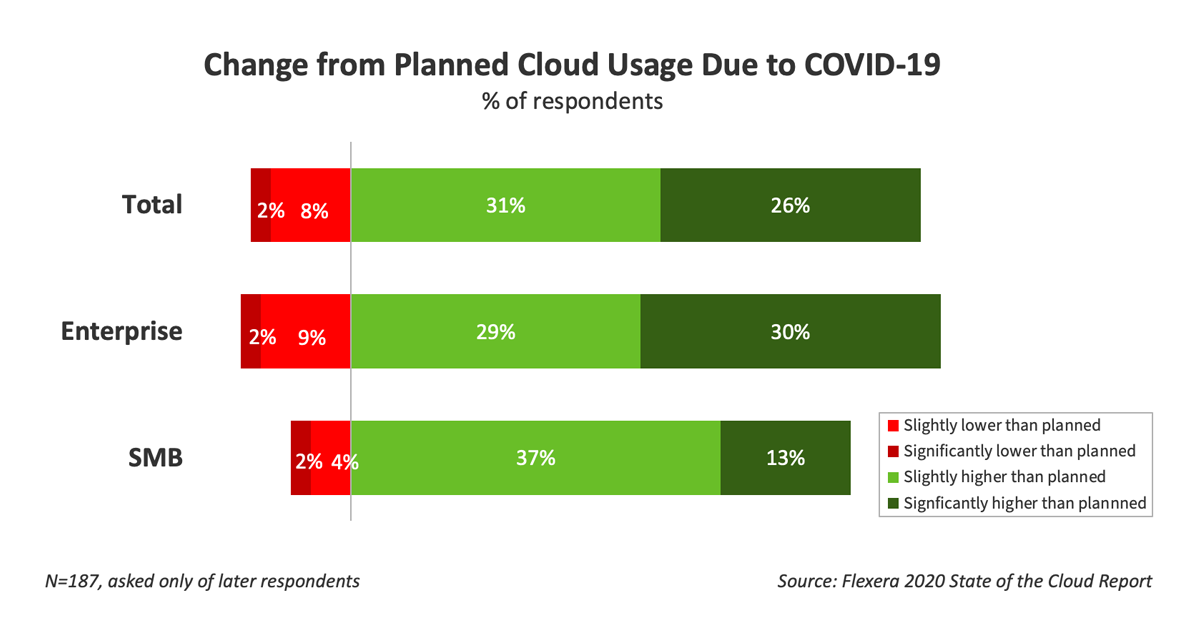By 2021, the root cause of 90% of cloud-based availability issues will be the failure to fully use cloud service provider native redundancy capabilities
Every organization is adjusting to the new normal after COVID-19. Business continuity has become paramount using whatever means necessary. One of the crucial areas of focus for large distributed organizations is operating business-critical applications without major downtimes during these trying times. Managing applications without major downtime is extremely difficult for distributed organizations with teams spread across many divisions and perhaps different geographic regions. It is even harder if they have to recover from unexpected downtimes and those downtimes can cost up to $140K per hour for large enterprises, according to Gartner. One of the ways to withstand is to stress-test your business continuity management often or completely automate the entire process.
https://www.gartner.com/smarterwithgartner/stress-test-your-business-continuity-management/

Are you taking advantage of hyperscale cloud platforms properly?
Organizations that have moved their applications to the cloud platforms can take advantage of the hyper scaled, software-defined, geographically dispersed, and constantly improved infrastructures. They don’t have to spend any more additional capital to create more data centers for application recoveries or even sign lengthy, ineffective contracts with their old resilience service providers.
Application Resilience is one of the Top Reasons to Move to The Cloud
Cost: Even pre-COVID-19, CAPEX to OPEX based infrastructure spending was the primary reason why organizations decided to move to the cloud platforms Agility: Operational efficiency and agility for new digital transformation efforts for new applications are much better on the cloud rather than the on-prem data centers Resilience: This is a big one even though resilience is one of the least talked about capabilities to move to the cloud. Cloud platforms not only bring down the cost of achieving resilience but also offer much better resiliency for applications compared to traditional data center-based infrastructures. Particularly, during COVID-19 situation, cloud providers are nimble enough to adapt to the requirements to deliver their own platforms resilience — https://www.gartner.com/smarterwithgartner/3-actions-for-cloud-providers-to-support-customers-through-covid-19/
Are you testing your cloud applications’ resilience consistently?
We ask a number of resilience-related questions when we talk to our potential customers. Answers to some of these questions are mostly expected ones, but these potential customers are many times surprised that they are the ones responsible for a lot of application-related resilience activities. We ask them,
- Did you know cloud providers are not responsible for backup, recovery, and DR for your applications?
- Do you backup your cloud workloads properly, other than just scheduling snapshots in the same region?
- How often do you test your recovery plans?
- How often do you refresh your DR plans?
- How automated are your operations to check the resilience of your applications?
- Do you have the right skills to codify the cloud infrastructure to protect your applications in the event of a failure?
- Did you know you can automate the entire DR test process and get reports delivered to you every day?

Well, the last question catches the attention of everyone we talk to. There are reasons why they don’t do basic DR testing.
- Time: Of course, OPs teams are always busy. You can’t blame them, they always have more on their plate than what they can humanly handle. Moreover, creating DR plans is almost always a “project” and by the time they are finished creating one, it will most likely be outdated as some configuration has changed in the production environment.
- Complexity: Cloud applications are complex and especially more complicated when they auto-scale their cloud infrastructure. It is human nature to avoid chasing a moving target.
- Cost: Even if they signed up with a resiliency provider, every additional DR test cost more on-prem so organizations just get by with what they can. One of our customers said they pay $40–50K USD per additional DR test.
- Skills shortage: Lack of knowledge of application environments, lack of cloud skills lead to postponing cloud application resilience tests.

Is there an easy “touch” or “bot” to test your cloud application resilience?
Appranix Cloud Application Resilience platform makes it easy for organizations to completely automate their entire environment DR or chaos tests with a simple policy. In fact, you can onboard, protect, and run your first automated recovery test over a coffee break.

When you get a chance, dial-into our latest webinar here — https://www.appranix.com/events/webinar-registration.html
